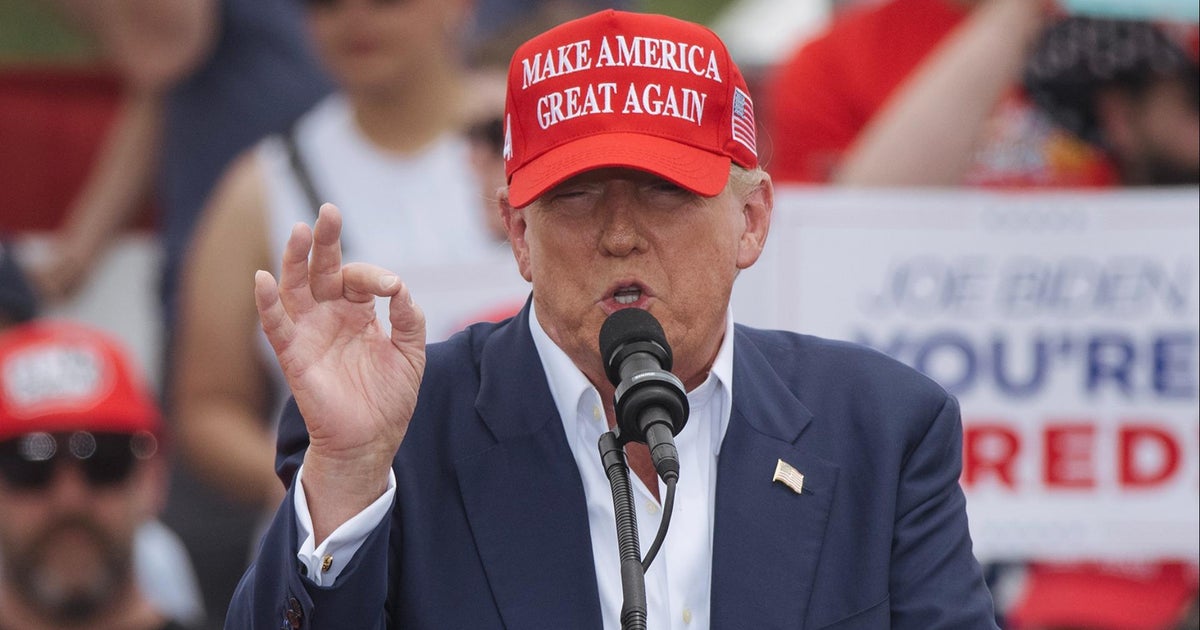
Project 2025, a 900-page blueprint for the next Republican president, is gaining attention for its proposals to overhaul the federal government. Among those changes: a major restructuring of the U.S. tax code.
President Biden and Democrats have been citing Project 2025 in recent weeks as they seek to highlight what could be in store if former President Donald Trump wins at the polls in November and retakes the White House in January. Many of the blueprint’s proposals touch on economic matters that could impact millions of Americans, as well as social issues such as abortion and diversity, equity and inclusion, or DEI, topics.
Project 2025, overseen by the conservative Heritage Foundation, is spearheaded by two ex-Trump administration officials: project director Paul Dans, who was chief of staff at the Office of Personnel Management, and Spencer Chretien, former special assistant to Trump who is now the project’s associate director.
The tax proposals of Project 2025, if enacted, would likely affect every adult in the U.S. by tossing out the nation’s long-standing system of multiple tax brackets, which is designed to help lower-income Americans pay a smaller share of their income in federal taxes compared with middle- or high-income workers.
Currently, there are seven tax brackets — 10%, 12%, 22%, 24%, 32%, 35% and 37% — with each based on income thresholds. For instance, a married couple pays 10% in federal income tax on their first $23,200 of income, and then 12% on earnings from $23,201 to $94,300, and so on. Married couples need to earn over $487,450 this year to hit the top tax rate of 37%.
Project 2025 argues that the current tax system is too complicated and expensive for taxpayers to navigate. To remedy those problems, it proposes just two tax rates: a 15% flat tax for people earning up to about $168,000, and a 30% income tax for people earning above that, according to the document. It also proposes eliminating “most deductions, credits and exclusions,” although the blueprint doesn’t specify which ones would go and which would stay.
“The federal income tax system is progressive, and people who make more money pay a higher marginal tax rate than people who make less money,” Brendan Duke, senior director for economic policy at the left-leaning Center for American Progress, told CBS MoneyWatch. “Conservatives look at that, and they feel that that’s unfair to the wealthy to ask them to pay a greater share of their income in taxes than lower income families.”
The Project 2025 proposal “is a dramatic reform of how we fund our government, where we ask the wealthy to pitch in more than lower income families,” he said. “This shifts taxes from the wealthy to the middle class, full stop.”
The Heritage Foundation and Project 2025 didn’t immediately respond to a request for comment.
Project 2025’s tax rates
Millions of low- and middle-class households would likely face significantly higher taxes under the Project 2025’s proposals.
He estimated that a middle-class family with two children and an annual income of $100,000 would pay $2,600 in additional federal income tax if they faced a 15% flat tax on their income due to the loss of the 10% and 12% tax brackets. If the Child Tax Credit were also eliminated, they would pay an additional $6,600 compared with today’s tax system, Duke said.
By comparison, a married couple with two children and earnings of $5 million a year would enjoy a $325,000 tax cut, he estimated.
“That 15% bracket is a very big deal in terms of raising taxes on middle-class families,” Duke said.
Millions of U.S. households earning less than $168,000 would likely face higher taxes with a 15% rate. Currently, the bottom half of American taxpayers, who earn less than $46,000 a year, pay an effective tax rate of 3.3% — which reflects their income taxes after deductions, tax credits and other benefits.
Among other tax and economic changes proposed by Project 2025:
- Cutting the corporate tax rate to 18% from its current 21%, which was enacted in 2017’s Tax Cuts and Jobs Act. Prior to the TCJA, the corporate tax rate stood at 35%.
- Reducing the capital gains tax to 15%. Currently, high-income earners pay a tax of 20% on their capital gains.
- Eliminating credits for green energy projects created by the Inflation Reduction Act.
- Considering the introduction of a U.S. consumption tax, such as a national sales tax.
- Eliminating the Federal Reserve’s mandate to maintain full employment in the labor market.
To be sure, overhauling the tax system would require lawmakers to approve changes to the tax code, which could be difficult if either the House or Senate is controlled by the opposing party. For instance, Trump was able to get his Tax Cuts and Jobs Act passed by a Republican-led Congress, even though no Democrats voted in support of the measure.
What does Trump say about Project 2025?
Trump has distanced himself from Project 2025, with his campaign proposing its own plans through “Agenda 47.” While Trump hasn’t yet proposed any concrete tax plans, he has suggested his proposal to create a 10% tariff for all imports and a 60% tariff for Chinese imports that could raise enough money to eliminate the federal income tax.
But tax experts say the math doesn’t work out because money raised from new tariffs would fall far short of replacing the more than $2 trillion in individual income taxes collected by the IRS each year. Consumers are also likely to pay more in higher costs for imported consumer goods and services with tariffs tacked onto them, experts note.
“A tariff is a consumption tax, and there is a throughline between [Project 2025’s] tax reform and what Trump has talked about, getting rid of taxes in favor of a consumption tax,” Duke noted.
